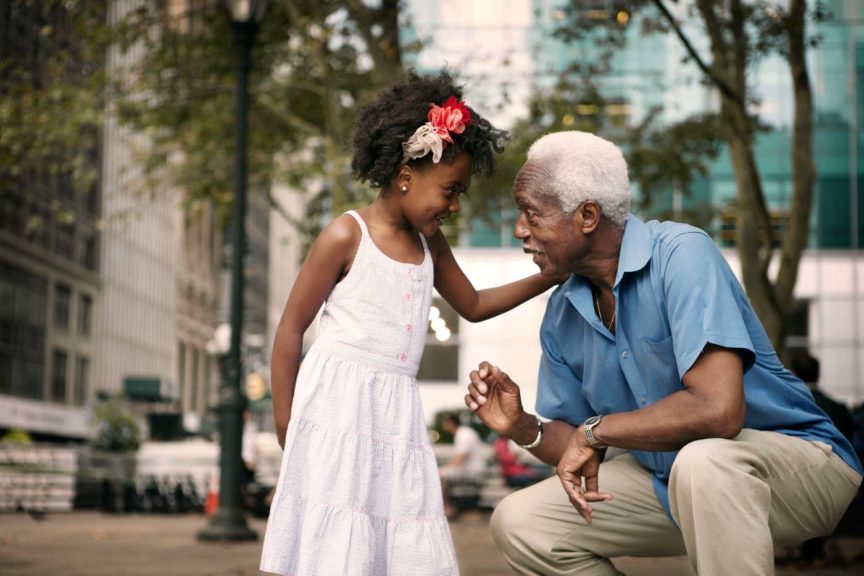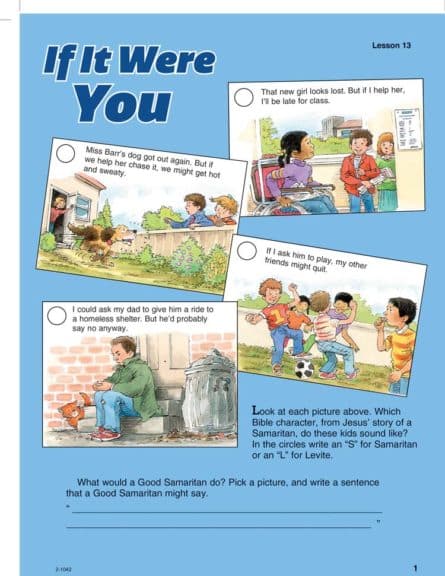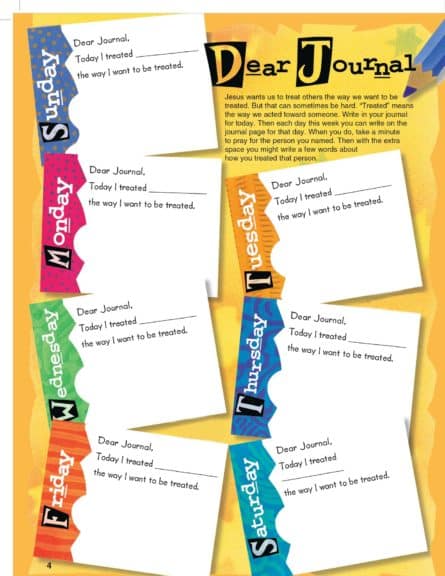Use this lesson outline to teach elementary students about Jesus’s parable of the Good Samaritan found in the book of Luke.
Editor’s Note: This lesson was adapted from Bible-in-Life, Elementary.
SCRIPTURE: Luke 10:30-37
LESSON FOCUS: Treat others the way you want to be treated.
Materials
- Construction paper, marker
- Prepared index cards, Marker, Yarn, Tape, Slips of paper, Paper bag
- Bible Discoveries activity page, Pencils
- Dear Journal activity page, Pencils
The Parable of the Good Samaritan Teacher Background
The road between Jerusalem and Jericho was only about 17 miles long but was notoriously dangerous for travelers—even into the mid-19th century A.D. It twisted and turned through rocky, cave-filled terrain as it descended 3,300 feet. Bandits could find numerous hiding places in which to wait for
travelers.
The two Jewish religious leaders in the parable (the first to arrive at the scene) probably had valid reasons under religious law for not stopping to help the hurt man. If the man turned out to be dead, touching him would make them unclean according to ceremonial law and ineligible for temple duties. The “expert in the law” (Luke 10:25) to whom Jesus told the parable would have recognized that immediately. But again Jesus broke with religious tradition to teach the larger compassion of God’s law.
Jesus’ listeners would have been displeased by the example of the Samaritan. Samaritans shared some common heritage with Jewish people. But the Jews despised them because they had married foreigners in their past and did not worship at the temple in Jerusalem (John 4:9, 20). This Samaritan gave no thought to personal safety or racial and societal taboos. He cared for the man, cleaning his wounds and taking him to an inn.
Bible Readiness
To connect their own experiences to the Bible story about the good Samaritan, children will participate in an activity and discussion.
MATERIALS: Construction paper, marker
Gather the children into a large group on the floor as you begin today’s lesson about the good Samaritan helping the man who was hurt. To help them begin to understand that it is important to treat others the way we want to be treated, lead the following activity and discussion.
Before class, print these words on separate sheets of paper: friendly, mean, kind, respectful, uncaring, polite, rude, helpful.
In class, lay the papers around on the floor. Then have the children walk around to each one and as a class, read each word aloud. (If the words seem new to the children, read them aloud a second time as well.) You may feel that you need to take time to talk about each of the words to make sure the children truly understand what they mean. If you think they are unsure of the meaning, use the word in a sentence, such as: The student was helpful to the teacher even though he didn’t know him. Or: The child was very polite to the elderly lady who was crossing the street.

SAY: We are with lots of different people each day—friends, family, classmates, people we don’t know well, and even people we might not like too much. Think about how you like to be treated by these people.
As you ask questions and the children consider their answers, they will begin to think about how to treat others. Ask the children to go and stand by the word that best expresses their answer as you ask each of the following questions.
ASK:
- How do you like friends to act toward you? (Pause to let the children move to the word that best expresses their answer. Then ask them to give more words that tell how they like to be treated by friends.)
- How do you like your family to act toward you? (Again, let the children stand by a word that tells how they feel. Then ask them to explain what they mean by their choice. Encourage them to give an example or some details to help answer the question.)
- How do you like to be treated by kids who don’t know you or who don’t like you? (Here the children may need a little more time to choose a word. When everyone has made their choice, ask for volunteers to tell why they chose that particular word. Some children may say they want someone to be polite to them even if they don’t like each other or that they feel that they could at least be respectful. The children will probably recognize that even when they’re dealing with someone they don’t like, they still don’t like to be treated with meanness or rudeness.)
Tie to the Bible
SAY: In our Bible story, someone had a question about how to treat others. Jesus’ answer has to do with what we were just talking about.
Bible Study: Luke 10:30–37
Using the Bible, children will study Luke 10:30–37: The good Samaritan helps a hurt man.
Gather the children into a circle on the floor or at the table. Have them turn to the book of Luke in their Bibles. If they need help finding Luke, suggest that they look in the table of contents in the front of their Bibles to find the correct page number. Ask volunteers to take turns reading the different paragraphs in the story. Or you may read the story to the children while they follow along in their books.
Bible Review Questions
- Why did Jesus tell this story? (A man asked Jesus whom he should love— the story was Jesus’ answer.)
- Why do you think the man asked Jesus to explain who his neighbor was? (He wanted to find out whom he did and didn’t have to love or whom he was required to love.)
- Who did not treat the hurt man with love? (The Levite and the priest.)
- What reasons do you think they might have given for passing by? (They may have said that their churchlike responsibilities were more important than helping; they might have been afraid that the robbers would come back; they might not have had enough money to get medical help for the man; etc.)
- Why was it strange for the Samaritan to help? (The Samaritan was used to being hated by Jews—he might have felt he didn’t need to be nice to the Jewish man.)
- How did the Samaritan help the hurt man? (He put on medicine and bandages; he carried the man on his own donkey; he took the man to an inn where he paid for the man to stay until he was well.) You might add that the people listening to Jesus’ story would have been amazed to hear of a Samaritan helping a Jewish person.
- How did Jesus’ story answer the first man’s question? (It showed that anyone in need is our neighbor.)
- How should we treat others? (We should treat them the way we want to be treated; we should love even people we don’t like.)
Bible Review Activity

Have the children retell the facts of the story as if it were a live news report. Using pencils as microphones, some of the students could be on-the-spot reporters or news anchors. Others could be the characters from the story as they are interviewed by the reporters. By listening to the questions and answers, you can evaluate what the children learned from the Bible story.
If you have a large class, it may be necessary for you to do this activity more than once to allow all the children to participate. Give as many children as possible a chance to participate in the retelling of the story.
Bible Activity Choices
Through the activities below, the children will have an opportunity to further explore the Bible story from Luke 10:30-37. You will need separate table or floor space for the “If It Were You” activity. The “Role Play Game” will require a larger area of floor space.
Option 1: Role Play Game
MATERIALS:
- Prepared index cards
- Marker
- Yarn
- Tape
- Slips of paper
- Paper bag
As the students participate in this active game, they will be thinking about how they might treat someone in their everyday lives. Before class, label two index cards “Me” and “Someone I Don’t Like Too Much.” Attach a loop of yarn to each so they can be worn around the neck. On slips of paper, print: cafeteria, on your street, classroom, playground, at church. Place them in a paper bag.
The children take turns role playing in pairs—each wearing a sign—while the others watch and offer suggestions. The child wearing the “Me” sign practices treating “Someone I Don’t Like Too Much” in a kind way, based on the setting pulled from the bag. The role play could be as simple as a sentence, or the children may feel comfortable developing a whole scenario.
Option 2: If It Were You
MATERIALS:

- Pencils
Give the children a chance to evaluate how the children in the pictures on this Bible Discoveries page are treating others. Remind them that we want to treat others as the Samaritan did in the Bible story we studied today.
Have the children follow the directions on the Bible Discoveries activity page to compare the characters’ actions to the good Samaritan’s. Allow the children to choose a partner to work with for this activity.
Bible Response
MATERIALS:

- Pencils
- Word signs from Bible Readiness section
After the children have cleaned up their activities, gather them back together into one large group to apply the Bible story of the good Samaritan.
SAY: Jesus taught that we should treat others the way we want to be treated—even if it’s someone we don’t like too much. That might mean forgetting about ourselves in order to help someone else.
Pass out pencils and the Dear Journal activity page. Read aloud the directions to be sure everyone understands what to do. Then allow the children a short time to think about the person they might choose and to pray for them. As the students fill in the blanks, you might allow them to move to a separate, quiet place in the room to work. Some children may write only one or two words to complete the prayer, and that’s fine. However, others may choose to write a lot. Allow them to do so. Be available to help children who struggle with spelling or just need assistance to complete the page.
When the children have finished, gather them back together into the large group.
Prayer Time
Think about how you can treat the person you just prayed about. Spread out the word signs from Bible Readiness again. Ask the children to think about the person they have chosen. Then ask them to go and stand by a word that shows how they will try to treat that person. Encourage the students to silently pray their prayer from Bible Discoveries while standing next to the word.
Close by having the class say together, “Treat others the way you want to be treated.”
Seeing God throughout the Week
Encourage students to continue writing in their Dear Journal page each day this week. Remind students that they can ask God to help them treat others the way they want to be treated.
Need more parable lessons? We’ve got you covered!
Did you enjoy this lesson? It was adapted from Bible-in-Life for kids. To learn more about this curriculum, check out the video below or visit BibleinLife.com.
Explore every age level at BibleinLife.com!







